What is webinar budget management: strategic cost planning for marketing success
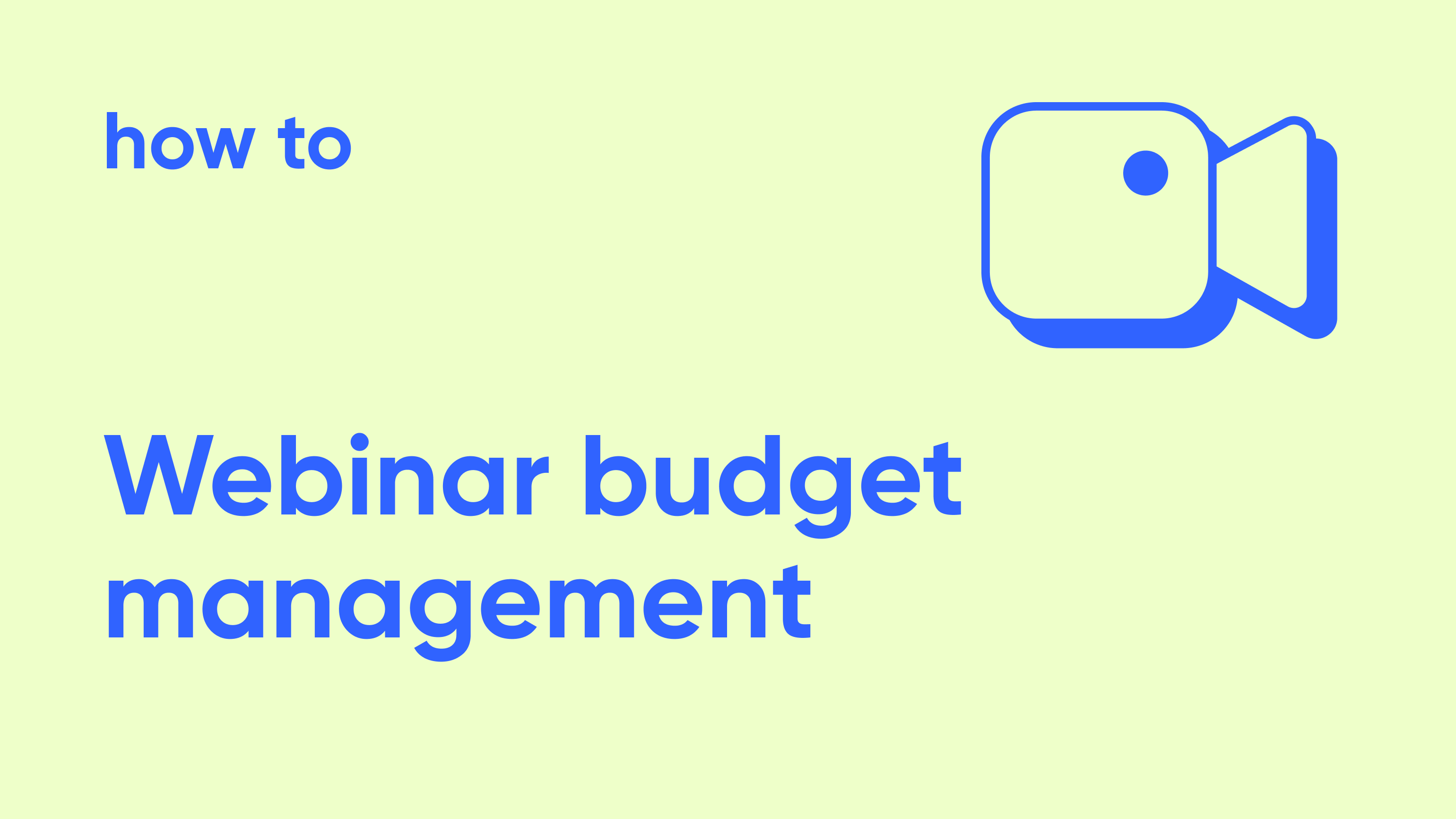
Webinar budget management has become critical for marketing success. As the shift toward remote engagement continues, webinars have firmly established themselves as a critical channel for marketers. 80% of marketers report that webinars have helped lower their cost-per-lead. This dramatic cost difference explains why 89% of marketers now report that webinars outperform other channels in creating qualified leads, while 78% confirm that webinars help lower their overall cost per lead (Statista, 2023). With hosting costs ranging from as little as $100 to $3,000 depending on platform choices and marketing promotion levels, understanding proper budget allocation has never been more essential for marketing teams seeking maximum return on investment.
The strategic importance of webinar budget management extends far beyond simple cost control. Modern webinars function as content multiplication engines that continue generating value long after the live event concludes. Unlike traditional marketing channels that consume budget and deliver immediate but limited results, properly budgeted webinars create long-term assets through recordings, repurposed content, and sustained audience relationships. This shift from viewing webinars as expenses to recognizing them as strategic investments fundamentally changes how marketing leaders approach resource allocation and performance measurement.

This comprehensive guide addresses every aspect of webinar budget management that marketing professionals need to master. You'll discover how to structure budgets across different investment scenarios, from cost-effective starter approaches under $800 to enterprise-level campaigns exceeding $5,000, while learning to optimize promotional spending that can drive registration costs as low as $2-10 per click through strategic channel selection. The guide also explores advanced budget optimization strategies including content repurposing, recurring program efficiencies, and performance tracking systems that transform budget uncertainty into predictable, scalable marketing assets.
Understanding webinar budget management fundamentals
Master marketers understand their cost components before building effective investment strategies. You need clear visibility into all finance categories before developing systematic approaches to webinar budget allocation. Understanding how webinars compare in cost-effectiveness is essential when planning your marketing mix. The average cost per lead for webinars is $72 — significantly lower than $811 for trade shows and $294 for PR efforts.
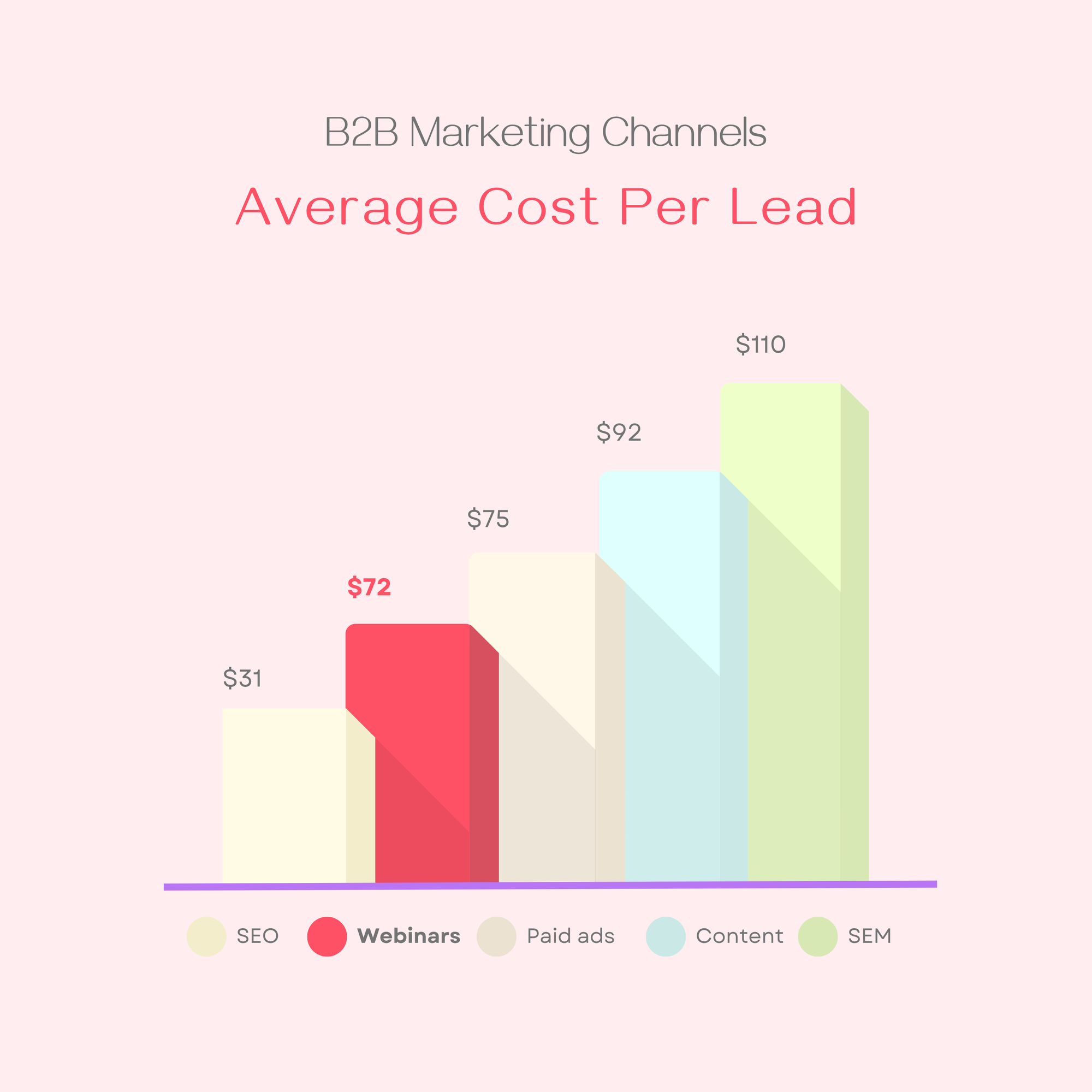
What is webinar budget management and strategic investment planning
Webinar budget management encompasses the complete budgeting process for planning, executing, and measuring all financial aspects of your webinar program. This includes direct costs, indirect expenses, and opportunity costs associated with team time and resources. The budget process becomes vital when aligning expenditures with measurable business outcomes.
The critical insight is that webinars create long-term assets, not just one-time events. Traditional marketing channels consume budget and deliver immediate results. Properly managed webinars generate content that continues providing value for months or years after the initial investment, creating ongoing revenue opportunities through lead nurturing and customer education.
Building comprehensive webinar budget framework
Creating effective budget frameworks requires systematic organization of all potential costs. Your framework should include platform fees, content creation, promotion, production, and follow-up activities to ensure comprehensive coverage. Budgeting tools can dramatically improve allocation accuracy and reduce marketing waste. Companies using advanced budgeting tools report a 25% improvement in accuracy and budget efficiency. Missing any category leads to budget overruns and reduced returns that impact your finance planning.
The most successful frameworks include multiple investment scenarios. Present basic, professional, and premium options with clear trade-offs between cost and capabilities. This approach provides flexibility while maintaining cost control throughout the planning process, allowing teams to learn from each implementation cycle.
Webinar investment vs traditional marketing channel costs
Webinars deliver multiple marketing functions simultaneously while traditional channels typically focus on single objectives. This fundamental difference affects how you evaluate costs and returns when managing your marketing finance allocation.
Cost-per-lead analysis often favors webinars significantly over traditional approaches. Well-executed webinars frequently achieve cost-per-lead ratios between $50-200 with minimal overhead expenses compared to trade shows that might generate leads at $500-1000 each.
Traditional channels also provide limited performance data compared to the rich analytics you receive from webinar platforms. Webinars deliver detailed analytics about attendee behavior, engagement levels, and conversion patterns that improve sales follow-up effectiveness and future campaign optimization strategies.
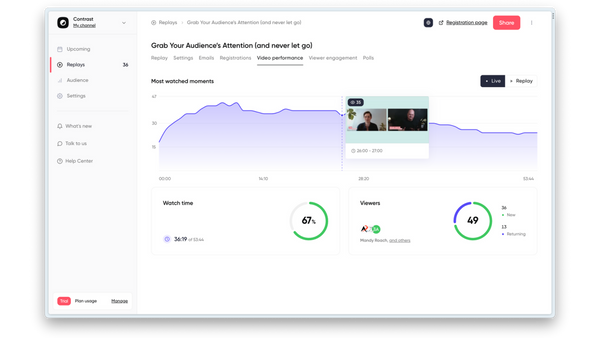
How to create a webinar budget: strategic planning process
Creating webinar budgets requires systematic planning that aligns costs with business objectives. The planning process determines whether your investment generates positive returns or becomes an expensive experiment requiring additional finance resources.
Budget creation process: from concept to implementation
Effective budget development starts by defining clear, measurable business goals. Determine your target number of qualified leads, expected attendance, and desired content outcomes. Work backward from these goals to establish appropriate investment levels that support revenue objectives.
Cost analysis requires understanding typical spending ratios across categories managed within marketing budgets. Platform costs typically represent 20-30% of total budget, content creation 15-25%, promotion 30-40%, and production 10-20%. These ratios adjust based on your specific objectives and the quality of webinar experience you want to deliver.
Audience characteristics directly influence budget requirements and the stories you'll tell through content. Webinars targeting enterprise decision-makers require different investment approaches than those aimed at small business owners. Consider audience expectations for content quality, production values, and follow-up materials when allocating resources across different budget categories.


Get More Insights From Your Webinars
Start for free up to 30 registrants. No credit card needed.
Start for freeWhat are the costs of hosting a webinar: complete cost breakdown
Understanding specific cost categories helps optimize budget allocation and identify areas for potential savings or strategic investment. Every component serves specific purposes in delivering successful outcomes that align with your business goals.
Webinar platform costs and pricing models
Platform costs provide the foundation for your entire webinar program and significantly impact the quality of webinar experience you can deliver. Pricing models range from free basic options to enterprise solutions costing thousands monthly, requiring careful finance planning.
Free platforms work for simple internal presentations but typically limit audience size, recording quality, and branding options. Subscription-based pricing typically offers better value for regular webinar hosts who need consistent access to advanced tools. Monthly plans range from $50-500 while annual commitments often provide 20-40% cost savings.
For example, Zefort made the switch from Zoom to Contrast and saw major gains in both efficiency and engagement. After moving platforms, their attendance rates increased by 79%, and average watch time nearly doubled. What used to take their marketing team five hours now takes just 30 minutes. Read the full case study →
Enterprise platforms justify higher costs through advanced capabilities including custom branding, detailed analytics, CRM integrations, and white-label options. These solutions cost $200-2000+ monthly but provide features essential for large-scale marketing programs managed across multiple departments.
Production and technology investment options
Production quality directly influences audience perception and engagement levels while determining the stories you can tell effectively. Basic professional setup requires reliable internet, adequate lighting, and clear audio equipment that doesn't strain your finance allocation.
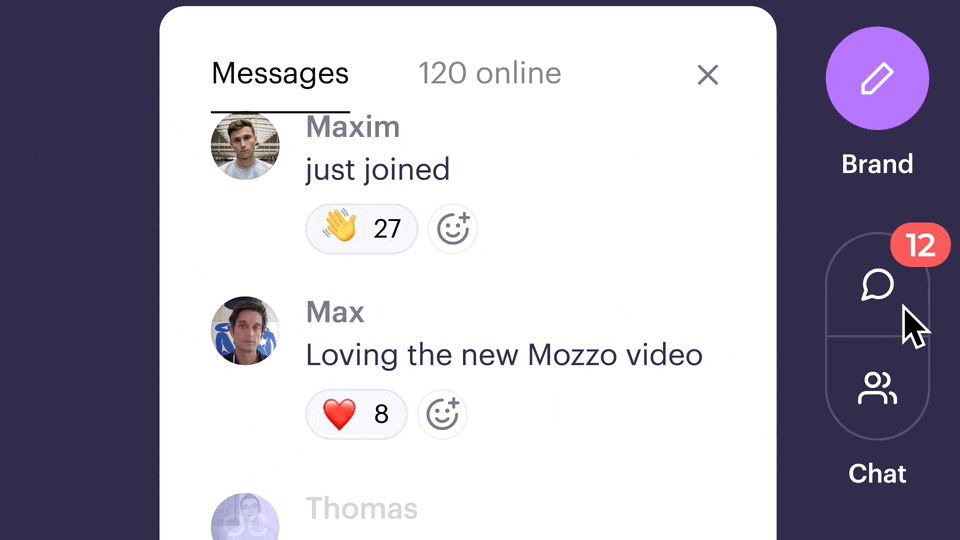
Investing $200-500 in quality microphones, lighting, and cameras typically generates positive returns through improved audience engagement and content reusability. Professional production involves multiple cameras, professional lighting, and streaming software with investments ranging from $1000-5000+ per event.
Software integration costs depend on your existing technology requirements. CRM integration, marketing automation, and analytics tools typically add $50-300 monthly but often improve returns significantly through better lead management and follow-up processes that drive revenue.
Time investment and resource management
Time represents the largest hidden cost in webinar production and it's completely controllable through effective planning. Well-organized webinars require 20-30 hours of preparation while poor planning can consume 60+ hours for identical results, impacting your overall finance efficiency.
Recurring webinar programs improve efficiency dramatically through template development and process standardization. Subsequent events typically require 40-60% less preparation time, making series programs more cost-effective than individual events while building consistent revenue streams.
Webinar promotion costs and marketing investment strategies
Effective webinar promotion requires strategic allocation across multiple channels to maximize registration while controlling costs. Your promotional budget directly determines audience size and quality.

Paid promotion budget and channel investment
Social media advertising provides precise targeting capabilities with costs ranging from $2-10 per click depending on audience competitiveness and business goals. LinkedIn typically costs more but delivers higher-quality B2B leads while Facebook and Instagram offer broader reach at lower costs.
Email marketing tools cost $50-500 monthly but often deliver the highest registration rates through advanced automation, segmentation, and personalization capabilities. Search engine marketing works particularly well for educational webinars with costs varying from $1-20 per click based on keyword competition.
Budget scenarios: investment levels and cost alternatives
Different investment levels serve different objectives and organizational constraints while requiring various tools and managed approaches. Understanding these scenarios helps match spending to expected outcomes and available resources.
Starter budget: cost-effective webinar launch strategy
Starter budgets typically range from $200-800 total investment focusing on essential elements while minimizing optional expenses. This approach works well for testing webinar effectiveness or serving smaller engaged audiences.
Free platform solutions provide basic functionality with limitations including attendee caps and branding restrictions. DIY content creation using existing expertise and basic tools keeps costs minimal while maintaining professional standards. Organic promotion through existing channels maximizes budget efficiency by leveraging email lists, social media followers, and professional networks.
It could be a great way to start your webinar campaigns whithout investing too much ressources and scale up after finding the right format. It is also advised for small businesses who are on a budget.
Professional budget: balanced investment planning

Professional budgets typically range from $1000-5000 balancing quality enhancement with cost control to deliver superior webinar experience. This investment level suits most marketing webinars targeting external audiences for business development and revenue generation.
Premium platform features justify increased investment through custom branding, advanced analytics, and integration capabilities. Professional content creation typically costs $500-1500 but often increases attendance and engagement significantly. Balanced promotion strategies combining organic and paid channels often achieve 3-5x registration growth compared to organic-only approaches.
Enterprise budget: comprehensive webinar investment
Enterprise budgets exceed $5000 focusing on maximum impact and comprehensive audience reach. This investment level suits product launches, major announcements, or high-stakes marketing campaigns designed to generate significant revenue.
Advanced platform solutions provide complete customization including unlimited attendees, extensive integrations, and dedicated support. Professional production teams manage comprehensive event production from script development through post-production editing, while multi-channel promotion campaigns utilize various advertising platforms and comprehensive content strategies.
How to maximize ROI for webinars: value creation and content repurposing
Maximizing webinar returns requires viewing events as content creation opportunities rather than isolated presentations. Smart marketers extract multiple value streams from single webinar investments.
ROI calculation and content repurposing strategy
Calculating webinar returns requires tracking multiple value streams beyond immediate lead generation metrics. Cost-per-lead analysis provides baseline calculations, but webinar leads often convert at higher rates than other channels due to demonstrated interest and education levels.
Content repurposing multiplies initial investment returns by creating blog posts, social media content, email campaigns, and website resources from single webinar content. Social media content creation from webinar recordings provides weeks of posting material while blog articles flow directly from webinar presentations. GetContrast.io simplifies content repurposing through integrated recording management and automatic transcription capabilities.
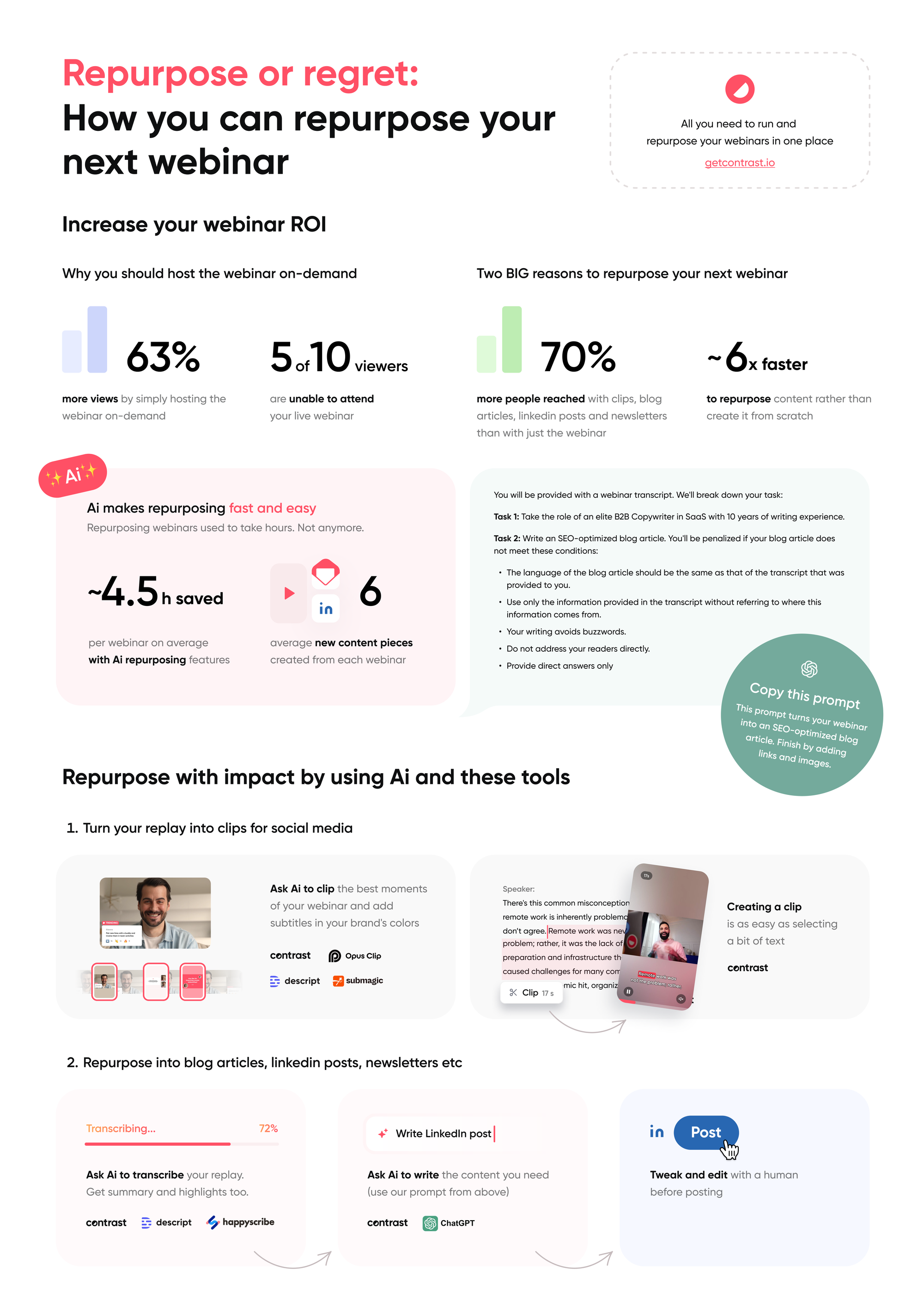
What are effective budgeting strategies: strategic management approaches
Effective webinar budgeting combines strategic planning with tactical flexibility to optimize resource allocation while maintaining cost control. Successful approaches balance risk management with growth opportunities.
Phased investment and best practices
Phased investment reduces risk while building program capabilities progressively. Pilot programs test webinar effectiveness with minimal investment before scaling to larger campaigns. Performance-based scaling ties investment increases to demonstrated results that can be measured against revenue objectives.
Regular budget reviews ensure ongoing alignment between webinar performance and business objectives. Cross-campaign allocation leverages economies of scale across multiple webinars through annual platform subscriptions and bulk services, often reducing per-webinar costs by 20-30%.
Recurring webinar programs: efficiency benefits
Recurring series improve cost efficiency dramatically through template development and process standardization. Series planning enables bulk pricing advantages for platforms and services, typically providing 20-40% savings compared to individual event pricing.
Audience retention reduces acquisition costs as satisfied attendees register for future events automatically. This loyalty effect can reduce promotional requirements significantly for established programs while providing consistent revenue opportunities.
How to track webinar expenses: budget monitoring and analysis
Effective expense tracking provides real-time budget visibility while identifying optimization opportunities. Proper monitoring prevents surprises while enabling strategic adjustments that improve finance efficiency.
Budget tracking and performance indicators
Real-time expense tracking prevents budget overruns by alerting when spending approaches predetermined limits. Monthly analysis reveals spending patterns by comparing planned versus actual expenses across categories, highlighting areas for future adjustments.
Cost-per-acquisition optimization focuses budget allocation on highest-performing promotional channels. Content performance analysis measures long-term asset value beyond event-specific metrics, while competitive benchmarking ensures investment efficiency by comparing costs and results to industry standards.
What tools help in webinar budgeting: planning and management software
Selecting appropriate budgeting tools streamlines financial management while improving accuracy and efficiency. The right software reduces administrative burden while providing better visibility into spending patterns.
Budget planning and tracking solutions
Spreadsheet templates provide accessible starting points for webinar budget management with built-in formulas handling calculations while maintaining flexibility. Platform comparison tools help evaluate solutions objectively through side-by-side feature and pricing analysis.
Marketing-focused expense tracking applications work well for webinar budget management with category organization and reporting capabilities. Integration with marketing automation and CRM systems provides comprehensive views of investment impact, enabling more accurate return calculations.
Conclusion
Mastering webinar budget management creates sustainable competitive advantages through strategic resource allocation and measurable return optimization. Understanding cost structures, planning systematically, and tracking performance enables consistent program improvement while supporting business goals and revenue generation.
The fundamental insight remains that webinars create long-term content assets rather than single-use events when properly managed. This perspective changes how you evaluate every investment decision from short-term expense thinking to strategic asset creation.
Success requires balancing strategic vision with tactical execution through clear objectives, comprehensive planning, and systematic performance measurement. Each webinar provides learning opportunities improving future budget allocation and program effectiveness while building organizational expertise.
GetContrast.io simplifies budget management through integrated capabilities eliminating technical complexity while maintaining professional standards. Comprehensive platforms enable focus on content creation and audience development rather than technical coordination, helping teams receive maximum value from their investments while achieving strategic business objectives.
Ready to take control of your webinar budget? Book a demo and we’ll help you launch smarter, more cost-effective webinars — without the guesswork.

